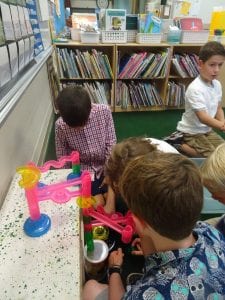 What a great week full of firsts! We had our first indoor recess and picture day. We had our first field trip. Going to Camp Lincoln on Thursday was wonderful. We continued to learn more about hurricanes and other rainy weather. We did some math fact checks and began to explore multiplication. I’d say 3E is a pretty nice, learning place to be. We’re smoothing out the kinks in our schedule and finding time for learning to combine with fun, action, literacy and art.
What a great week full of firsts! We had our first indoor recess and picture day. We had our first field trip. Going to Camp Lincoln on Thursday was wonderful. We continued to learn more about hurricanes and other rainy weather. We did some math fact checks and began to explore multiplication. I’d say 3E is a pretty nice, learning place to be. We’re smoothing out the kinks in our schedule and finding time for learning to combine with fun, action, literacy and art.
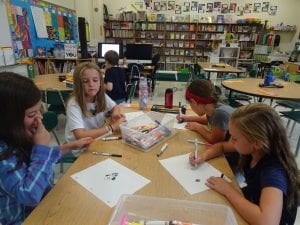 If you haven’t yet subscribed to the class blog, please do. On the blog you can see many of the things we’re doing in our classroom and as a class. In a couple weeks your children will each be posting on their own blogs as well. If you go down below, the subscribe box is at the bottom of the right-hand sidebar.
If you haven’t yet subscribed to the class blog, please do. On the blog you can see many of the things we’re doing in our classroom and as a class. In a couple weeks your children will each be posting on their own blogs as well. If you go down below, the subscribe box is at the bottom of the right-hand sidebar.
S.E.L. –Learning More About Reflection / Exploring the Theory of Multiple Intelligence
 Each day the children follow an agenda for the day. This helps them know what to expect. We talk about it each day at Morning Meeting and discuss places where we may need to be flexible with the timing and respectful of each other’s learning styles. We all take different amounts of time to do things. At their table seats they have a more detailed copy of “Our Day” to follow. At the end of each day or the morning of the next day, they’ve been asked to highlight some time of the day when learning stood out to them. This practice helps us learn more about reflection and metacognition. Metacognition, thinking about your thinking, strengthens and deepens learning. These weekly reflections (I’m guessing it will take us a two of three weeks before we’re really benefitting from the routine) will become the foundation of our learning portfolios. You may want to talk to your child about what he/she found most significant this week and why. Doing this, will only add to your child’s learning and growth. Thank you!
Each day the children follow an agenda for the day. This helps them know what to expect. We talk about it each day at Morning Meeting and discuss places where we may need to be flexible with the timing and respectful of each other’s learning styles. We all take different amounts of time to do things. At their table seats they have a more detailed copy of “Our Day” to follow. At the end of each day or the morning of the next day, they’ve been asked to highlight some time of the day when learning stood out to them. This practice helps us learn more about reflection and metacognition. Metacognition, thinking about your thinking, strengthens and deepens learning. These weekly reflections (I’m guessing it will take us a two of three weeks before we’re really benefitting from the routine) will become the foundation of our learning portfolios. You may want to talk to your child about what he/she found most significant this week and why. Doing this, will only add to your child’s learning and growth. Thank you!

 We learned about Howard Gardener’s Theory of Multiple Intelligences. We discovered there are lots of ways to be “smart” – eight, in fact. We know that everyone is some of all eight of the intelligences, but interests and experiences help us strengthen some more than others. We use some of the intelligences more than others because we find them interesting or we feel good when involved with those kinds of activities.
We learned about Howard Gardener’s Theory of Multiple Intelligences. We discovered there are lots of ways to be “smart” – eight, in fact. We know that everyone is some of all eight of the intelligences, but interests and experiences help us strengthen some more than others. We use some of the intelligences more than others because we find them interesting or we feel good when involved with those kinds of activities.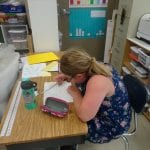
We read several more biographies to look for signs of all the different ways people show their multiple intelligences. We read about Jane Goodall, Margaret Hamilton (she programmed the computers that sent the Apollo rockets to the moon), and Alan Rabinowitz (called the Hero of Wild Cats.) It’s interesting to see how many ways people influence the world around them. We are learning we influence our world too. We are beginning to complete surveys and explore a sketch-note of the eight intelligences so we’ll be able to uncover how we each approach learning in our own unique way. We’re trying to discover our learning styles so we can our strengths to our advantage.
Climate and Weather
 In science we explored the difference between climate and weather. Through a Mystery Science video and activity we learned where different climate zone are in the world. Our map shows tropical, polar, temperate and mild climates. We did not add the deserts, but we know there is a fifth climate zone.
In science we explored the difference between climate and weather. Through a Mystery Science video and activity we learned where different climate zone are in the world. Our map shows tropical, polar, temperate and mild climates. We did not add the deserts, but we know there is a fifth climate zone.
We recognized how weather is all about water and the water cycle. We could feel the water in the air and could tell that our weather was being impacted by air masses moving up from the south. We could feel the remains of Florence and could imagine how devastating that storm was when it came ashore.
This week we’ve read more about hurricanes and we’ve read about how thunderstorms form. We’re learning about air pressure and all the elements of the atmosphere that meteorologists pay attention to in order make predictions about what the weather will be like in the days to come. We’re looking forward to having Hayley LaPoint, a meteorologist from WMUR, come to visit 3rdgrade in two weeks.
Learning About Multiplication
 When I asked, everyone in the class thought they were not quite ready to begin learning multiplication. They thought doing multiplication would be hard. Then we got started and learned multiplication is a faster way of adding. If we have lots of groups that are the same we can find the total with multiplication – and save ourselves counting mistakes. We’ve discovered, t the start, multiplication isn’t all that difficult. This week we’ve been exploring multiplication as repeated addition and looking for how groups repeat. We’ve surprised ourselves by realizing we already know quite a bit about multiplication because we know about skip counting.
When I asked, everyone in the class thought they were not quite ready to begin learning multiplication. They thought doing multiplication would be hard. Then we got started and learned multiplication is a faster way of adding. If we have lots of groups that are the same we can find the total with multiplication – and save ourselves counting mistakes. We’ve discovered, t the start, multiplication isn’t all that difficult. This week we’ve been exploring multiplication as repeated addition and looking for how groups repeat. We’ve surprised ourselves by realizing we already know quite a bit about multiplication because we know about skip counting.
Bits and Pieces –
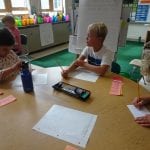 We finished our second chapter read-aloud, Phineas L. MacGuire – Erupts. Several of the kids said, “That’s it. It’s over? That’s the ending.” It is a little bit of a surprise. It seems like the story is about winning the science fair and proving who is the best scientist, but actually it’s about friendship and learning to be confident about who you are.
We finished our second chapter read-aloud, Phineas L. MacGuire – Erupts. Several of the kids said, “That’s it. It’s over? That’s the ending.” It is a little bit of a surprise. It seems like the story is about winning the science fair and proving who is the best scientist, but actually it’s about friendship and learning to be confident about who you are.- We are starting to read I Survived the Children’s Blizzard of 1888. We’ll learn more about weather and I hope children who’ve not found this series will. They’re exciting and great windows into important historic events.
 We continued on with some beginning assessments. This week we did some math fact checks. The end of the year goal is that children know all 70 addition and subtraction facts in 5 minutes or less. The reason for this, is that knowing math facts instantly without counting on or back makes more difficult math that much easier. That said, we also realize that the timed format of these check don’t work well for all children. They know the facts, but feel anxious about the format. Please don’t focus on the score. If possible focus on improvement. Play games where there is a lot of repetition – dice games are great for that. They more they practice, the easier they’ll be. Thank you!
We continued on with some beginning assessments. This week we did some math fact checks. The end of the year goal is that children know all 70 addition and subtraction facts in 5 minutes or less. The reason for this, is that knowing math facts instantly without counting on or back makes more difficult math that much easier. That said, we also realize that the timed format of these check don’t work well for all children. They know the facts, but feel anxious about the format. Please don’t focus on the score. If possible focus on improvement. Play games where there is a lot of repetition – dice games are great for that. They more they practice, the easier they’ll be. Thank you!- We had so many fabulous pictures and quotes about our Camp Lincoln trip that we’ll be making a second post about the trip later on today. We’ll all write it together and learn more about the “blogging dashboard” while doing it.

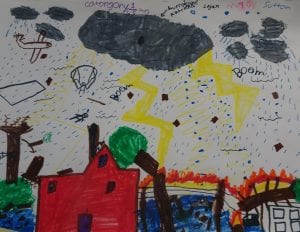 Most of the children were able to create a blog post to share the informational writing they created to share all they had learned about the weather topic they chose to research and study.
Most of the children were able to create a blog post to share the informational writing they created to share all they had learned about the weather topic they chose to research and study.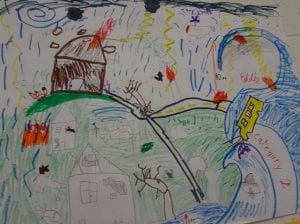 When you read through their posts you can learn about sandstorms and blizzards, hurricanes and tornadoes. You can learn about snow, clouds rainbows and meteorology too. They have worked for several weeks to do the research, type their information and publish both illustrated books and these blog posts that are accompanied by another piece of original art.
When you read through their posts you can learn about sandstorms and blizzards, hurricanes and tornadoes. You can learn about snow, clouds rainbows and meteorology too. They have worked for several weeks to do the research, type their information and publish both illustrated books and these blog posts that are accompanied by another piece of original art.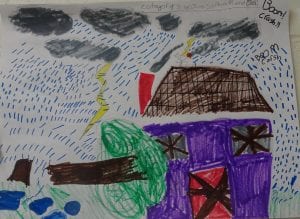
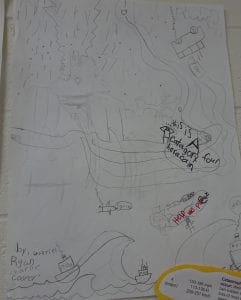 This post is illustrated by cooperative, small-group illustrations made to show the five hurricane levels defined by the Saffir-Simpson Wind Scale.
This post is illustrated by cooperative, small-group illustrations made to show the five hurricane levels defined by the Saffir-Simpson Wind Scale.

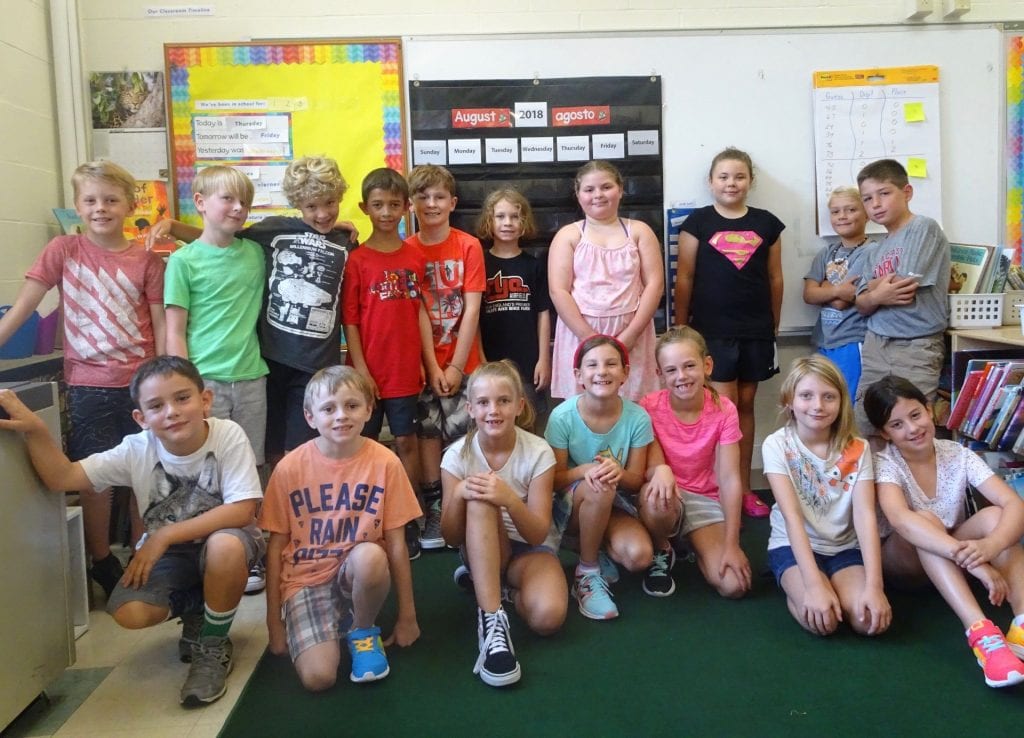

 Our first science inquiry of the year is about weather. We’ve learned a lot already and we’re excited to learn more and more. We’ve been learning about the difference between daily weather and climate. We’re recording daily weather and looking for patterns. Each morning we read the temperature and graph the weather and precipitation of the day. Soon we’ll be exploring barometric pressure as well. We are learning how to use these points of data to make reasonable predictions about what kind of weather might happen next.
Our first science inquiry of the year is about weather. We’ve learned a lot already and we’re excited to learn more and more. We’ve been learning about the difference between daily weather and climate. We’re recording daily weather and looking for patterns. Each morning we read the temperature and graph the weather and precipitation of the day. Soon we’ll be exploring barometric pressure as well. We are learning how to use these points of data to make reasonable predictions about what kind of weather might happen next.
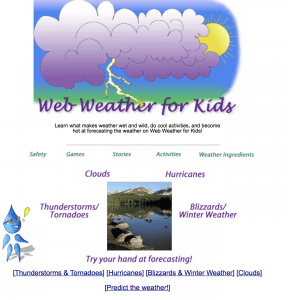
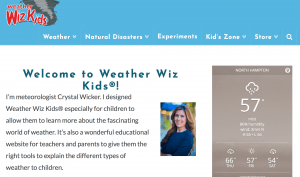
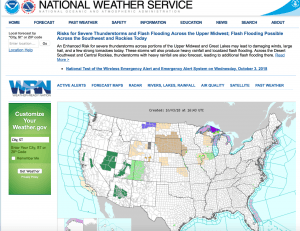
 What a great week full of firsts! We had our first indoor recess and picture day. We had our first field trip. Going to Camp Lincoln on Thursday was wonderful. We continued to learn more about hurricanes and other rainy weather. We did some math fact checks and began to explore multiplication. I’d say 3E is a pretty nice, learning place to be. We’re smoothing out the kinks in our schedule and finding time for learning to combine with fun, action, literacy and art.
What a great week full of firsts! We had our first indoor recess and picture day. We had our first field trip. Going to Camp Lincoln on Thursday was wonderful. We continued to learn more about hurricanes and other rainy weather. We did some math fact checks and began to explore multiplication. I’d say 3E is a pretty nice, learning place to be. We’re smoothing out the kinks in our schedule and finding time for learning to combine with fun, action, literacy and art. If you haven’t yet subscribed to the class blog, please do. On the blog you can see many of the things we’re doing in our classroom and as a class. In a couple weeks your children will each be posting on their own blogs as well. If you go down below, the subscribe box is at the bottom of the right-hand sidebar.
If you haven’t yet subscribed to the class blog, please do. On the blog you can see many of the things we’re doing in our classroom and as a class. In a couple weeks your children will each be posting on their own blogs as well. If you go down below, the subscribe box is at the bottom of the right-hand sidebar. Each day the children follow an agenda for the day. This helps them know what to expect. We talk about it each day at Morning Meeting and discuss places where we may need to be flexible with the timing and respectful of each other’s learning styles. We all take different amounts of time to do things. At their table seats they have a more detailed copy of “Our Day” to follow. At the end of each day or the morning of the next day, they’ve been asked to highlight some time of the day when learning stood out to them. This practice helps us learn more about reflection and metacognition. Metacognition, thinking about your thinking, strengthens and deepens learning. These weekly reflections (I’m guessing it will take us a two of three weeks before we’re really benefitting from the routine) will become the foundation of our learning portfolios. You may want to talk to your child about what he/she found most significant this week and why. Doing this, will only add to your child’s learning and growth. Thank you!
Each day the children follow an agenda for the day. This helps them know what to expect. We talk about it each day at Morning Meeting and discuss places where we may need to be flexible with the timing and respectful of each other’s learning styles. We all take different amounts of time to do things. At their table seats they have a more detailed copy of “Our Day” to follow. At the end of each day or the morning of the next day, they’ve been asked to highlight some time of the day when learning stood out to them. This practice helps us learn more about reflection and metacognition. Metacognition, thinking about your thinking, strengthens and deepens learning. These weekly reflections (I’m guessing it will take us a two of three weeks before we’re really benefitting from the routine) will become the foundation of our learning portfolios. You may want to talk to your child about what he/she found most significant this week and why. Doing this, will only add to your child’s learning and growth. Thank you!
 We learned about Howard Gardener’s Theory of Multiple Intelligences. We discovered there are lots of ways to be “smart” – eight, in fact. We know that everyone is some of all eight of the intelligences, but interests and experiences help us strengthen some more than others. We use some of the intelligences more than others because we find them interesting or we feel good when involved with those kinds of activities.
We learned about Howard Gardener’s Theory of Multiple Intelligences. We discovered there are lots of ways to be “smart” – eight, in fact. We know that everyone is some of all eight of the intelligences, but interests and experiences help us strengthen some more than others. We use some of the intelligences more than others because we find them interesting or we feel good when involved with those kinds of activities.
 In science we explored the difference between climate and weather. Through a Mystery Science video and activity we learned where different climate zone are in the world. Our map shows tropical, polar, temperate and mild climates. We did not add the deserts, but we know there is a fifth climate zone.
In science we explored the difference between climate and weather. Through a Mystery Science video and activity we learned where different climate zone are in the world. Our map shows tropical, polar, temperate and mild climates. We did not add the deserts, but we know there is a fifth climate zone. When I asked, everyone in the class thought they were not quite ready to begin learning multiplication. They thought doing multiplication would be hard. Then we got started and learned multiplication is a faster way of adding. If we have lots of groups that are the same we can find the total with multiplication – and save ourselves counting mistakes. We’ve discovered, t the start, multiplication isn’t all that difficult. This week we’ve been exploring multiplication as repeated addition and looking for how groups repeat. We’ve surprised ourselves by realizing we already know quite a bit about multiplication because we know about skip counting.
When I asked, everyone in the class thought they were not quite ready to begin learning multiplication. They thought doing multiplication would be hard. Then we got started and learned multiplication is a faster way of adding. If we have lots of groups that are the same we can find the total with multiplication – and save ourselves counting mistakes. We’ve discovered, t the start, multiplication isn’t all that difficult. This week we’ve been exploring multiplication as repeated addition and looking for how groups repeat. We’ve surprised ourselves by realizing we already know quite a bit about multiplication because we know about skip counting. We finished our second chapter read-aloud, Phineas L. MacGuire – Erupts. Several of the kids said, “That’s it. It’s over? That’s the ending.” It is a little bit of a surprise. It seems like the story is about winning the science fair and proving who is the best scientist, but actually it’s about friendship and learning to be confident about who you are.
We finished our second chapter read-aloud, Phineas L. MacGuire – Erupts. Several of the kids said, “That’s it. It’s over? That’s the ending.” It is a little bit of a surprise. It seems like the story is about winning the science fair and proving who is the best scientist, but actually it’s about friendship and learning to be confident about who you are. We continued on with some beginning assessments. This week we did some math fact checks. The end of the year goal is that children know all 70 addition and subtraction facts in 5 minutes or less. The reason for this, is that knowing math facts instantly without counting on or back makes more difficult math that much easier. That said, we also realize that the timed format of these check don’t work well for all children. They know the facts, but feel anxious about the format. Please don’t focus on the score. If possible focus on improvement. Play games where there is a lot of repetition – dice games are great for that. They more they practice, the easier they’ll be. Thank you!
We continued on with some beginning assessments. This week we did some math fact checks. The end of the year goal is that children know all 70 addition and subtraction facts in 5 minutes or less. The reason for this, is that knowing math facts instantly without counting on or back makes more difficult math that much easier. That said, we also realize that the timed format of these check don’t work well for all children. They know the facts, but feel anxious about the format. Please don’t focus on the score. If possible focus on improvement. Play games where there is a lot of repetition – dice games are great for that. They more they practice, the easier they’ll be. Thank you!

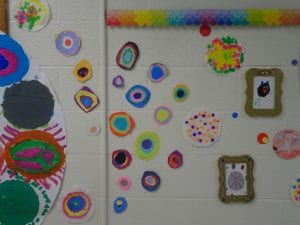
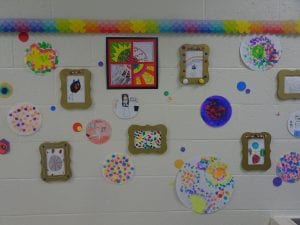
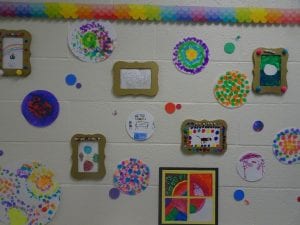
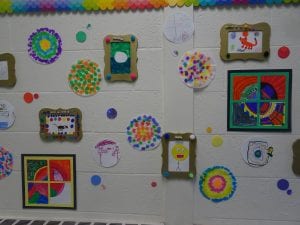
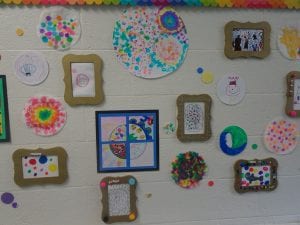
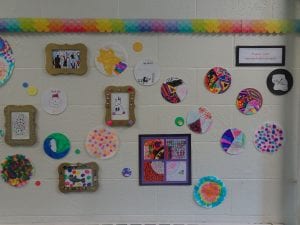
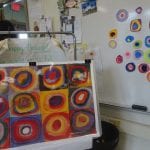 We began our day making Kandinsky Dots.
We began our day making Kandinsky Dots.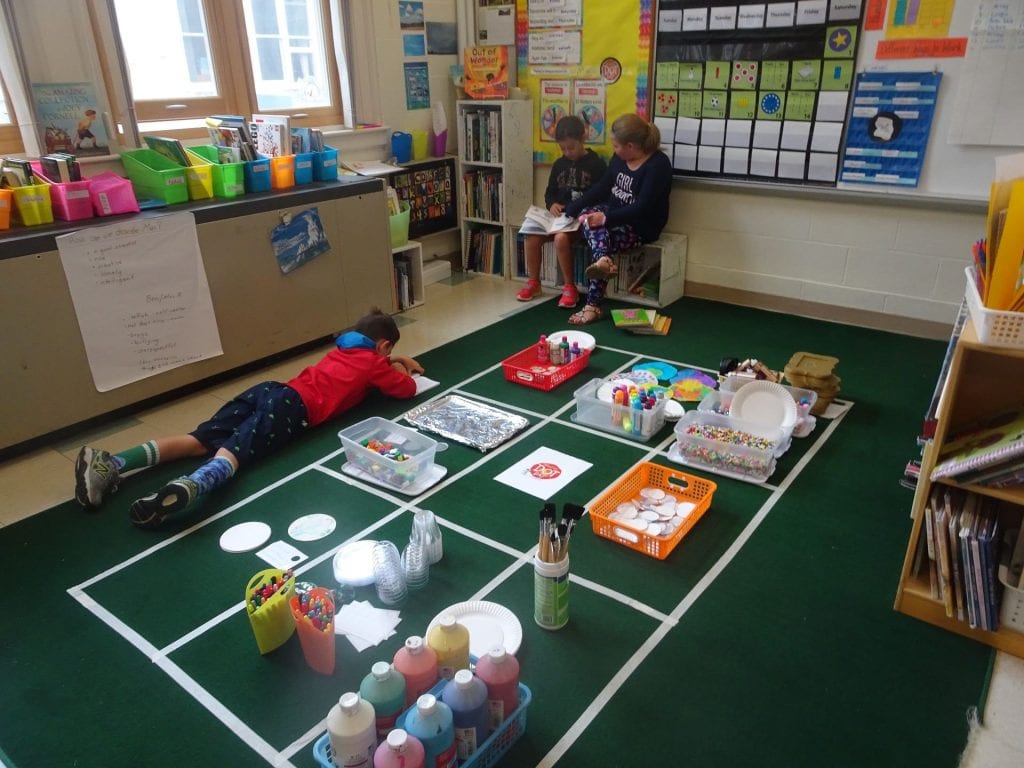
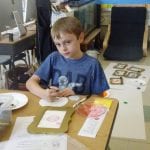
 Here’s what we can learn from this story:
Here’s what we can learn from this story: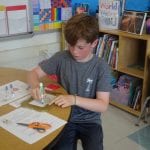
 People can draw. Be patient and try.
People can draw. Be patient and try.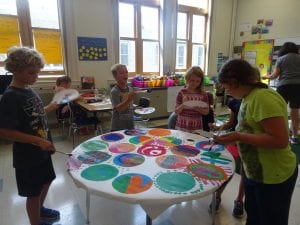
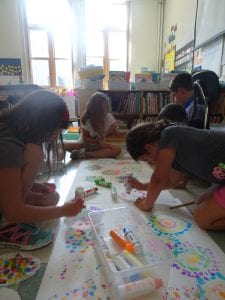

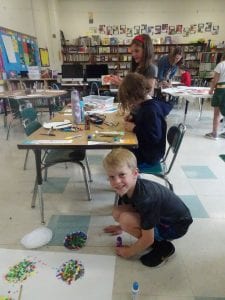
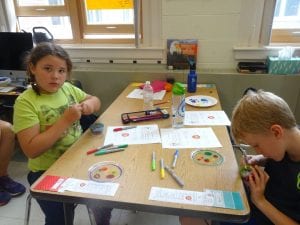


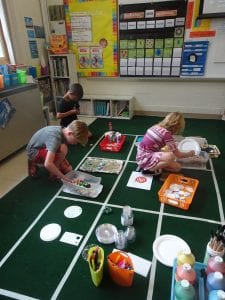


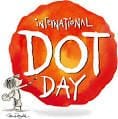
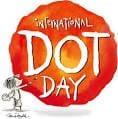 Ask your child about Dot Day. See if they can explain why it is celebrated on September 15th each year. We’re excited about the possibility of making our marks to see where they take us. Here are our initial goals for the school year.
Ask your child about Dot Day. See if they can explain why it is celebrated on September 15th each year. We’re excited about the possibility of making our marks to see where they take us. Here are our initial goals for the school year.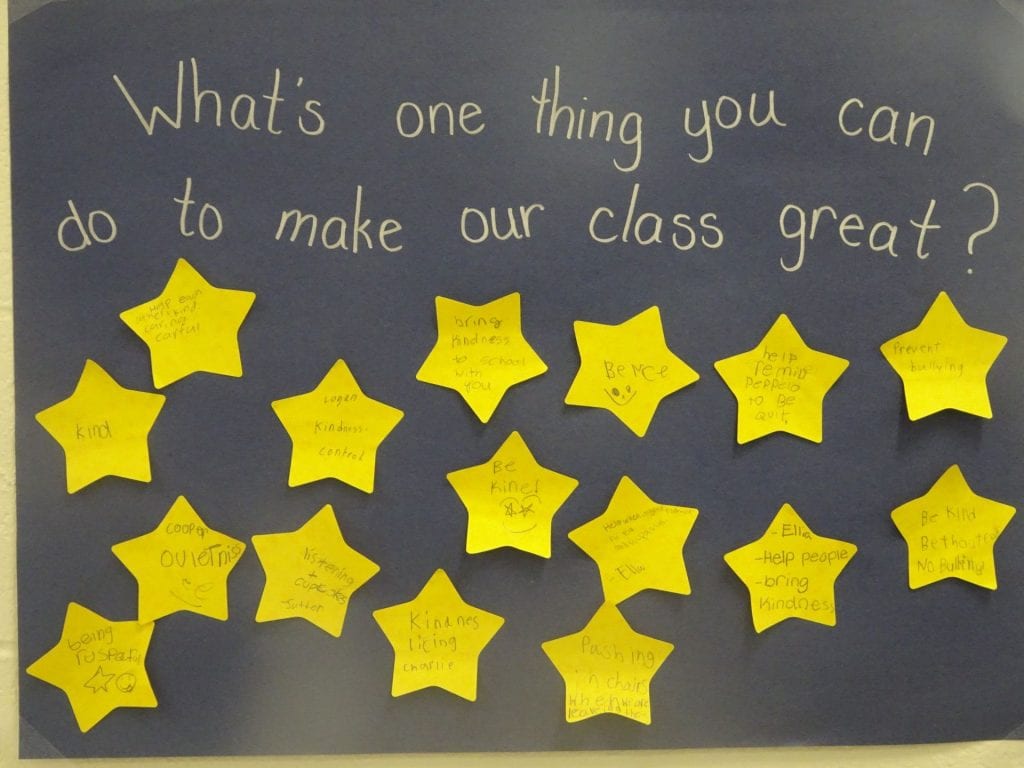
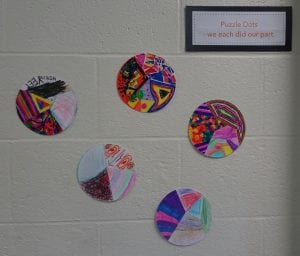

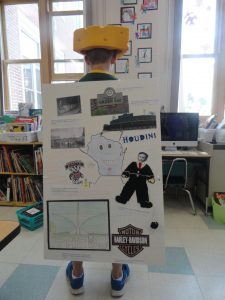
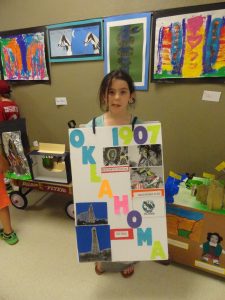
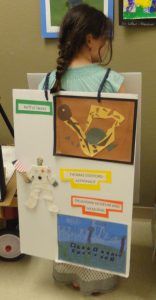
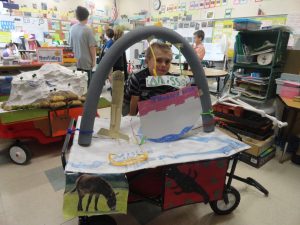 Suggestions of how to build each type of float along with the following criteria will be sent home on Monday, April 16.
Suggestions of how to build each type of float along with the following criteria will be sent home on Monday, April 16. The float obviously represents your state and shows its uniqueness.
The float obviously represents your state and shows its uniqueness. It is a fun project and such an exciting celebration of our country and a year of learning! We can’t wait to see you on Thursday, May 24!
It is a fun project and such an exciting celebration of our country and a year of learning! We can’t wait to see you on Thursday, May 24!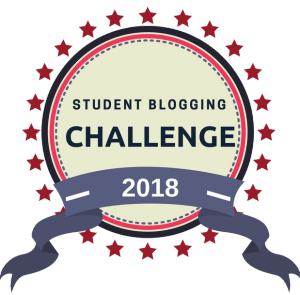 We are going to participate in the Student Blogging Challenge for the first time. We are excited about finding a wider audience for our blogs. We are also looking forward to reading the blogs from other classrooms and students in different parts of the world.
We are going to participate in the Student Blogging Challenge for the first time. We are excited about finding a wider audience for our blogs. We are also looking forward to reading the blogs from other classrooms and students in different parts of the world.